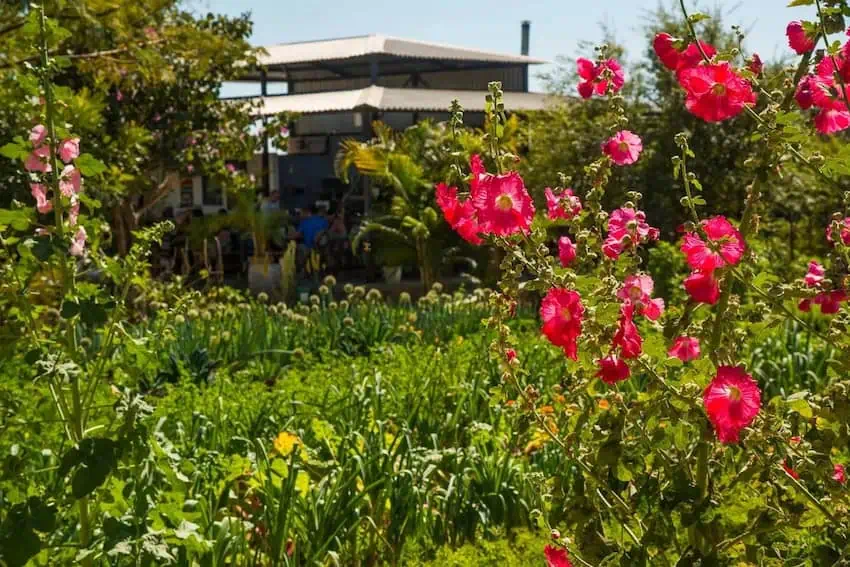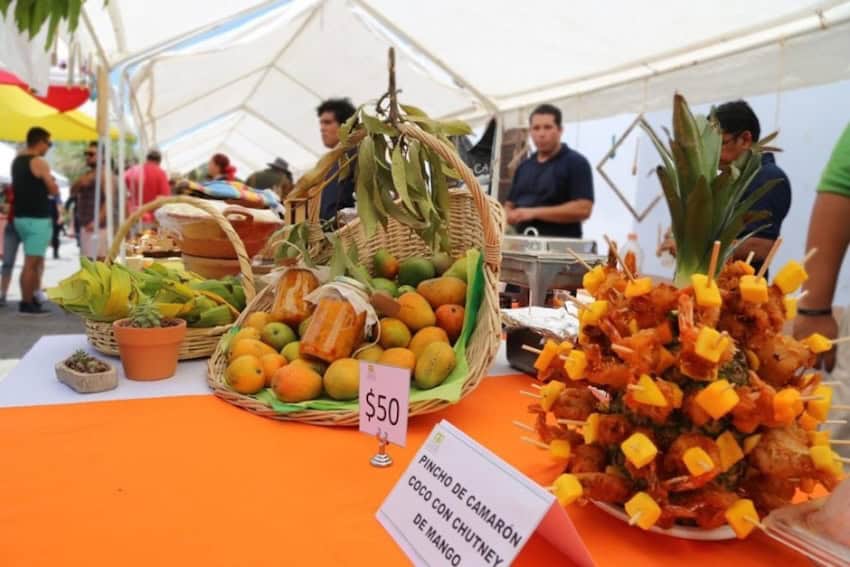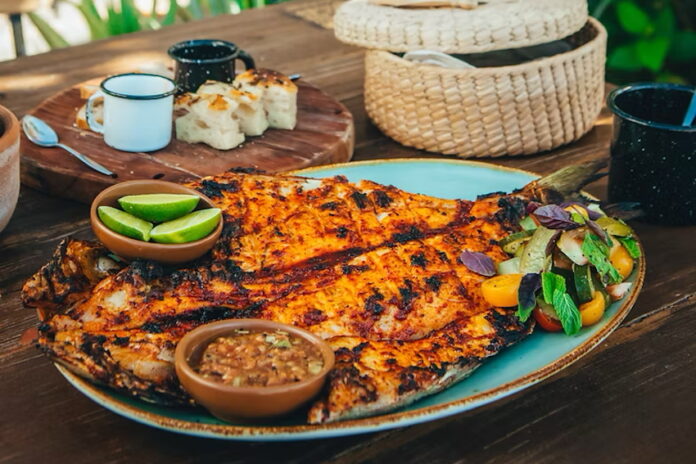The secret to why so much great food is found in restaurants in Baja California Sur is that so many of the ingredients are grown nearby. That’s certainly true in Los Cabos, and also in La Paz, although it’s important to make a distinction between the capital city and the larger municipality of which it is a part.
Agricultural bounty in La Paz, as one might expect, doesn’t come from the city, but rather from a few small production areas like El Carrizal, El Centenario, Los Planes, and Todos Santos that account for only a fraction of the land in the larger municipality, but the vast majority of crops. Todos Santos is particularly notable, not only because it and the neighboring community of El Pescadero account for a significant portion of the total growing area in La Paz. But also because they’re the heart and soul of the municipality’s thriving farm-to-table restaurant scene.
Farm-to-table restaurants in Todos Santos and El Pescadero

Although there’s a history of farming centuries old in these areas, the farm-to-table movement has flourished in the last two decades, led by restaurants such as Cocina de Campo by Agricole, Hierbabuena, and Jazamango.
Of course, each is distinct. Hierbabuena, founded in 2013 in El Pescadero, has a small garden of perhaps one acre, but grows upwards of 40 different varieties of fruits, flowers, herbs, and vegetables, which it incorporates into its delicious menu specialties. Contrast this with Agricole, the 37-acre El Pescadero farming cooperative founded by Elizabeth Ibarra Vivanco, whose abundant produce may be found in its farm store market and also in its restaurant, Cocina de Campo by Agricole — the latter of which has been celebrated as a Bib Gourmand selection by the Michelin Guide, certifying exceptional quality and value.
Javier Plascencia, the scion of a Tijuana family of restaurateurs, needed no introduction when he opened Jazamango in Todos Santos in 2017. He’s the most famous chef in the Baja California peninsula and has his own Michelin Guide credentials, having received a coveted star for Animalón in Valle de Guadalupe. The restaurant was thus eagerly anticipated, and has lived up to its billing thanks not only to kitchen talent, but the restaurant’s reliance on local ingredients, many of them coming from the onsite garden.
There are other farm-to-table attractions, too, as well as those that don’t fit so neatly under the farm-to-table label, but certainly merit attention from visitors. Baja Beans, for example, is best known for its coffee, which can be sipped in fashionable resorts throughout the region and at its burgeoning number of cafés. The original is in El Pescadero and is also worth visiting for its Sunday Market, a great place to find fresh, local produce. Meanwhile, boutique hotel Paradero Todos Santos, which opened in early 2021, is bounded by family farms, a fortunate occurrence for diners at Tenoch by Paradero, its Michelin Guide-recognized restaurant.
Agricultural production in the La Paz municipality
Just under 4,000 hectares, or nearly 10,000 acres, are farmed in the municipality of La Paz, producing close to 140,000 tons annually of fruits and vegetables, including asparagus, basil, chile peppers, mango, melon, and tomato. Chile peppers, oddly, are botanically classed as a fruit, and account for over half (51.1%) of all agricultural production in La Paz. The fruit most associated with the region, though, is mango, so ubiquitous during the summer months that its fresh juice can be found at restaurants around the region, and particularly so in Todos Santos, where there’s even an annual festival dedicated to its many uses.

However, tomatoes and chile peppers remain the staple crops and account for close to 80% of all produce grown in the La Paz municipality. Each is also planted in Todos Santos and El Pescadero, too, although these communities each have their own specialties. In a 2015 study, for instance, it was noted that 41% of the planting area in Todos Santos was set aside for poblano peppers, 17% for basil, 16% for green beans, and 10% for herbs such as chives, marjoram, mint, rosemary, tarragon, and thyme. Plantings in El Pescadero were similarly allotted, with the vast majority of its 488 hectares given over to poblano peppers, basil, green beans, and culinary herbs.
How meat and seafood are sourced locally
Do restaurants in Todos Santos, El Pescadero, and elsewhere in the municipality source meat and seafood locally? You bet they do, although not exclusively. La Paz is the leading poultry producer in Baja California Sur, accounting for 482.7 tons according to the most recent yearly statistics. The municipality also provided 304.7 tons of pork, 92.7 tons of goat meat, 61 tons of lamb, and was a significant source of dairy products, too. Nearly 9 million liters of cow’s milk were squeezed from udders last year, and 384,000 liters of goat’s milk.
Seafood is an even more traditional part of the local economy, with the most important species harvested from the Pacific Ocean and the Sea of Cortés (as the Gulf of California is always referred to locally) being, from a value perspective, scale fish like tuna, dorado, snapper, and grouper (52.5%), lobster (21.6%), shark (13.3%), octopus (4.2%), shrimp (2.2%), abalone (2.2%), and oyster (0.7%). The fresher these catches are, the better. Hierbabuena, for example, sources its seafood from a fishmonger in nearby Punta Lobos.
The importance of regional aquaculture
However, not all fish consumed locally are caught. Aquaculture has also become big business in La Paz, and is a valuable source of fish that are critically endangered in the wild due to overfishing, like totoaba, as well as red snapper, shrimp, clams, oysters, and scallops. As Forbes Mexico reports, over one million totoaba are currently being nurtured in nurseries in La Paz by the aquaculture fishery Santomar, with a portion by Mexican law earmarked for return to the wild to replenish the natural population.
It’s important to note that wild totoaba cannot be legally consumed, but second-generation fish from aquaculture facilities can, and those are the fish that are finding their way onto menus in popular tourist destinations like Los Cabos and Todos Santos.
Chris Sands is the Cabo San Lucas local expert for the USA Today travel website 10 Best, writer of Fodor’s Los Cabos travel guidebook and a contributor to numerous websites and publications, including Tasting Table, Marriott Bonvoy Traveler, Forbes Travel Guide, Porthole Cruise, Cabo Living and Mexico News Daily. His specialty is travel-related content and lifestyle features focused on food, wine and golf.
